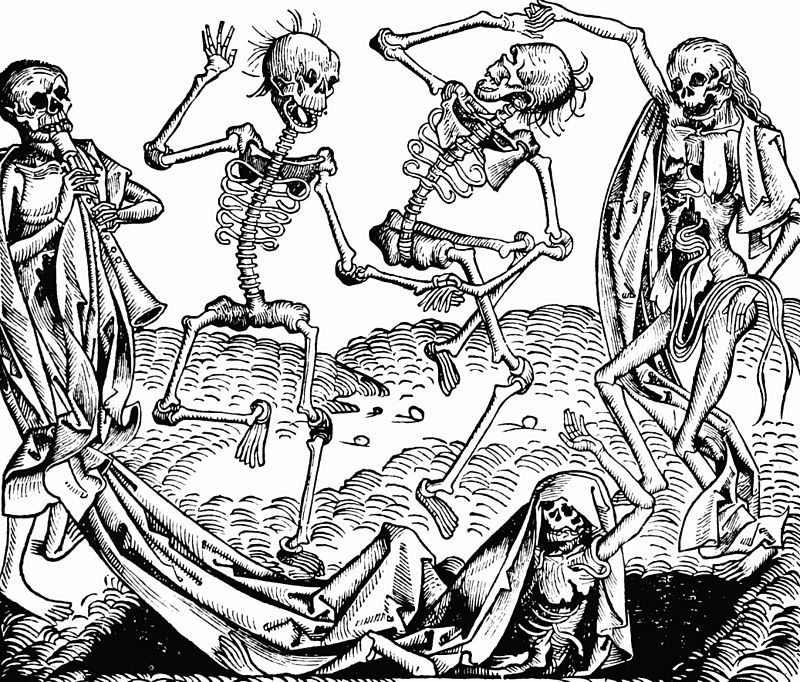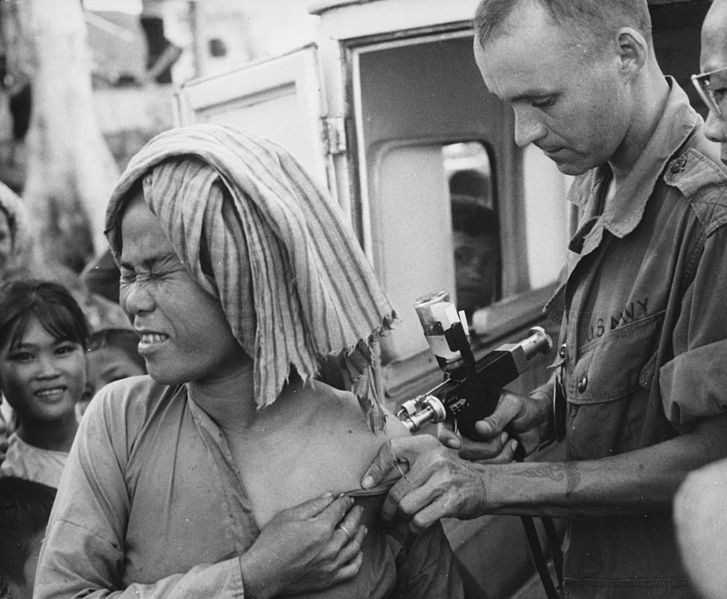
Soldiers from Fort Riley, Kansas, ill with Spanish flu at a hospital ward at Camp Funston. (Wikimedia Commons)
The World Health Organization already declared Covid-19 an international emergency. As we all already know by now, the coronavirus is a pandemic.
A pandemic is the worldwide spread of a disease.
Pandemics have contributed significant impacts on human life and communities with high percentages of death.
Some people use other terms like plagues, epidemics, and outbreak to describe it. But one valid explanation for all of these is that pandemics are unintended consequence of a society’s development and have been around since the dawn of civilization.
Let’s have a quick review. Here’s a list of some of the worst pandemics in human history based on a research by CDN Digital.

Inspired by the Black Death, The Dance of Death, or Danse Macabre, an allegory on the universality of death, was a common painting motif in the late medieval period. (Wikimedia Commons)
THE BLACK DEATH (1347 – 1351)
The Black Death or the Bubonic Plague originated in rats and spread to human via infected fleas.
It killed some 75 to 200 million people in Eurasia. This outbreak wiped out 30-50 percent of Europe’s population and some researchers suggest that it took more than 200 years for the continent’s population to recover.

A case of smallpox in 1886. (Wikimedia Commons)
THE SMALLPOX (15th – 17th centuries)
When Europeans first arrived in the continents of the Americas in 1492, they were able to introduce new diseases. Smallpox was one of them.
It was a very contagious disease that killed around 30% of those infected. It was estimated that the disease killed close to 90 percent of the population in the Americas. This pandemic helped the Europeans colonize and develop areas that were abandoned.

American Red Cross nurses tend to spanish flu patients in a temporary wards set up inside Oakland Municipal Auditorium in 1918. (Wikimedia Commons)
THE SPANISH FLU (1918 – 1919)
The Spanish Flu or the 1918 influenza pandemic was an outbreak of a H1N1 virus that infected around 500 million people.
In the early 21st century, it has already affected a third of the world’s population and responsible for killing over 50 million people.
Arriving in multiple countries around the world, the disease spread quickly and grew even faster due to the close living quarters of soldiers fighting in the first World War.

Saint Sebastian pleads with Jesus for the life of a gravedigger afflicted by the plague during the Plague of Justinian. (Wikimedia Commons)
PLAGUE OF JUSTINIAN (541 – 750 AD)
As new evidence are being uncovered, the death toll of this plague is still under debate. However, many research suggest that it may have accelerated the Roman Empire’s fall.
The reign of Byzantine Empire emperor Justinian I was hit by this plague. This plague was blamed as the true end of that era, just as Justinian was in the process of reuniting the east and west of the Roman Empire.
The empire was damaged, allowing other civilizations to reconquer previously Byzantine lands.

Preventive inoculation against cholera in 1966. (Wikimedia Commons)
CHOLERA (1817 – 1823)
Cholera began in India and spread through most of the region and its bordering areas.
It was in 1817-1823 when the first major cholera pandemic have killed millions of people.
The World Health Organization called cholera “the forgotten pandemic” and said that its seventh outbreak, which began in 1961, continues until today.
According to reports, Cholera infects 1.3 million to 4 million people in each year. It is caused by ingesting food or water contaminated with a certain bacteria. The disease overwhelms countries affected by extreme poverty and lack of social development.
Human immunodeficiency virus infection / acquired immune deficiency syndrome (1981 – present)
The first HIV/AIDS cases were reported in 1981.
This is a pandemic we’re still battling today. The sexually transmitted disease continues to infect and kill people.
In many ways, the condition can be managed in a lot of countries. At the end of 2018, about 37.9 million people globally were living with HIV.
If you know more facts about the worst pandemics in history, share it to us in the comment section of this video.
Just a reminder everyone, stay at home while our government and front liners make solutions to the current pandemic.

